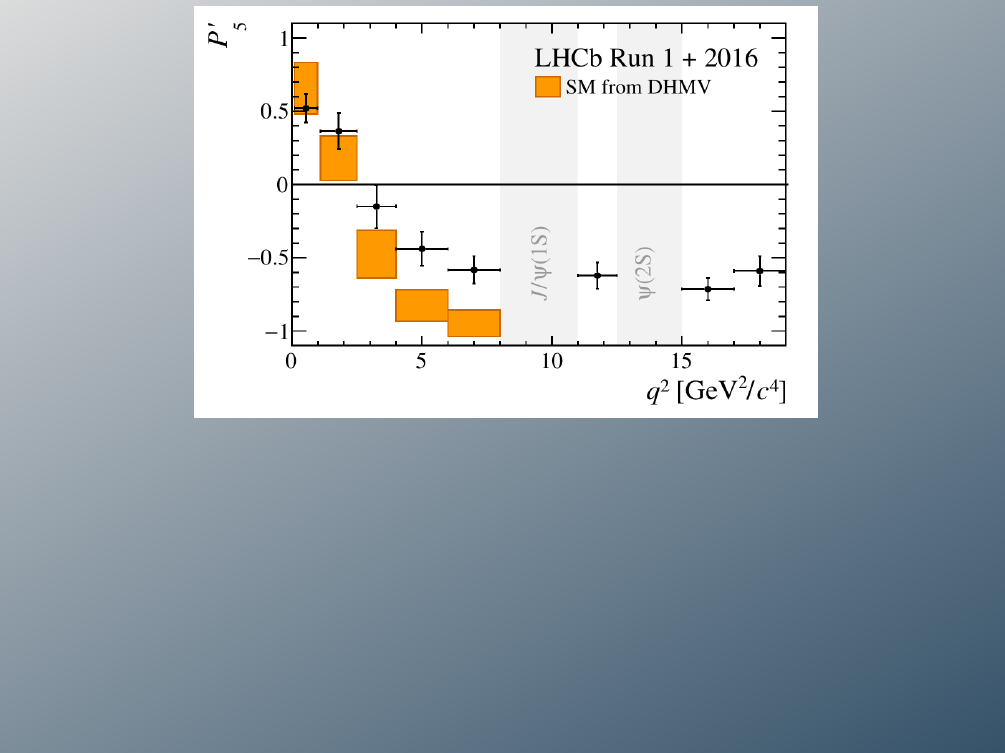LHCb: new angular analysis confirms old puzzle
The LHCb collaboration presented in a CERN seminar the update of a full angular analysis of the B0→K*μμ decay. The tension previously seen between the LHCb results and the Standard Model predictions persists.

The analysis of the B0→K*μμ decay is considered as a very promising way to search for effects of yet undiscovered particles. Unfortunately, the analysis of this decay is also complicated; the best sensitivity to the new particles comes from the study of the angular distribution of the muons and the kaon and pion from the K* meson decay. Physicists from the LHCb experiment have studied different angular observables as functions of the mass of the muon pair. One of these observables, "P5'" shows a local deviation with respect to the Standard Model calculation at a level of 2.5 to 2.9σ in the mass squared of the muon pair region q2 from 4.0-6.0 and 6.0-8.0 Gev2/c4. However, the exact significance of this discrepancy depends on the choice of theory nuisance parameters.
There is particular interest in these observables because their theoretical prediction is much less dependent on a good understanding of the hadronic physics involved in turning a B meson into a K* meson (so called form-factors). These observables are therefore ideal for searching for the effects of new particles in this decay.
The image shows the distribution of the P5’ observable as functions of the mass squared of the muon pair q2. The black points show the LHCb results, the Standard Model predictions are presented as orange boxes.
[1] Updated angular analysis of the B0→K*μ+μ- decay - LHCb Collaboration (LHCb-PAPER-2020-002)